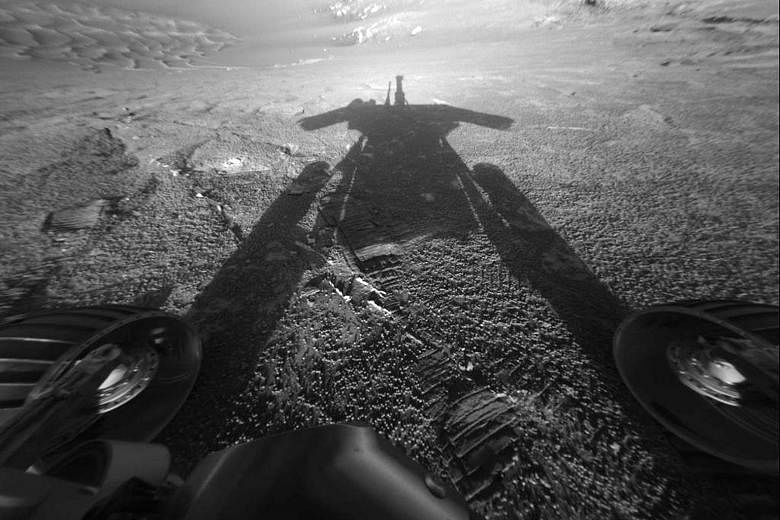Goodbye Opportunity. One of the most successful and enduring feats of interplanetary exploration, Nasa's Opportunity rover mission is at an end after almost 15 years exploring the surface of Mars. The robot - missing since the space agency lost contact with it during a severe planet-wide dust storm in June last year, was declared officially dead on Wednesday. After more than a thousand commands to restore contact, engineers in the Space Flight Operations Facility at Nasa's Jet Propulsion Laboratory (JPL) made their last attempt to revive Opportunity on Tuesday, to no avail. Designed to last just 90 Martian days and travel 1km, Opportunity vastly exceeded all expectations in its endurance, scientific value and longevity, said Nasa. In addition to exceeding its life expectancy by 60 times, the 174kg rover had travelled more than 45km by the time it reached its most appropriate final resting spot on Mars - Perseverance Valley. During its journey, it discovered definitive proof of liquid water on ancient Mars and returned more than 217,000 images. This self-portrait of Opportunity, courtesy of the Sun and the rover's front hazard-avoidance camera, was taken as it moved farther into the "Endurance Crater" in the Meridiani Planum region of the Red Planet on July 26, 2004. "I cannot think of a more appropriate place for Opportunity to endure on the surface of Mars than one called Perseverance Valley," said Dr Michael Watkins, director of JPL. "The records, discoveries and sheer tenacity of this intrepid little rover is testament to the ingenuity, dedication, and perseverance of the people who built and guided her."
Beautiful Science

Join ST's Telegram channel and get the latest breaking news delivered to you.
A version of this article appeared in the print edition of The Straits Times on February 16, 2019, with the headline Beautiful Science. Subscribe
